Since I began Ten Weeks in Whitechapel, I’ve had numerous questions from friends and people on Twitter concerning certain aspects of the murders. While I’ve tried to answer as many as I can in one way or another, it’s not always been easy given the 140 character limit, so I thought I’d dedicate this week’s column to some.
Here we go then.
If we could analyse historical DNA e.g. one of the victims’ bodies and loads of the suspects’ bodies, could we confirm a match? – Sue Hayrettin, Yorkshire
Possibly, but it’s a bit of a long shot. Exhuming the bodies of potential suspects isn’t easy in itself and it’s almost impossible for the victims. For example, Annie Chapman was buried in a pauper’s grave so her bones would not be too easy to find and identify and I’m not sure anyone knows exactly if Mary Kelly’s headstone marks her actual resting place in St Patrick’s Roman Catholic Cemetery. That said, in 2015 The Ministry of Justice gave permission to Dr Weston Davies to unearth the woman he believes to be his great-aunt so they must be pretty confident that they have the right spot, but I’ve heard nothing else since.
Patricia Cornwell has suggested finding and exhuming Mary’s body to link it to Walter Sickert’s possible involvement in her death but I’m not sure why his descendants would want to disturb his bones to see him unmasked as the most famous serial killer in history. I certainly wouldn’t agree to put an ancestor of mine through that.
I suppose the main problem is that there needs to be an incredibly strong case for exhumation and most suspectology is based on a large amount of guesswork than irrefutable proof.
Do you think the ‘Juwes’ relates to Jubela, Jubelo and Jubelum or Jews? Do you think it was even written by the killer? – Matthew Biggs
It’s not impossible, Matthew, but there’s always something about the Goulston Street Graffito which strikes me as a bit far-fetched. I can’t see him killing once or twice (I have my doubts about Stride being a Ripper victim) in one night, with a kidney and part of a uterus in tow and still find time to leave a confusing message on a wall. Also, if he wanted to talk to the public he had ample time to write on the walls of Millers Court.
I’m fairly sure that he had no wish to neither speak to anyone at all about his crime nor taunt the authorities.
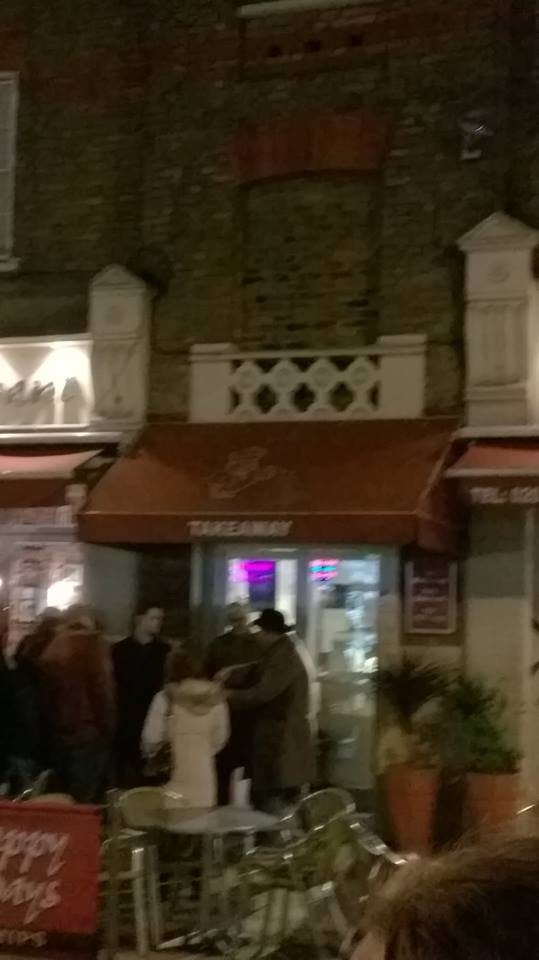
(A tour guide at the spot where the Goulston St Graffito was found)
As for Jubela and his mates, I think it’s just an honest case of bad spelling. If you belong to a secret organisation it’s probably not wise to point to it over the discarded apron of a murder victim. I’ve a lot of time for Martin Fido’s theory that it was a complaint about a market trader and nothing more than a coincidence.
Is it too great a coincidence that names Polly Ann, Mary Ann, dark Annie dark Mary, Catherine Eddowes giving her name as Mary Anne Kelly etc. are so similar as to get confused? The “ripper” seems so careful in so many ways it seems hard to believe he would mistakenly kill 3 or 4 women before getting to his intended target. – @jrvoller
There are many people who believe he was targeting Mary Kelly all along and stopped when he tore the poor girl to pieces, but it’s not as if she was especially difficult to find. She had her own soliciting patch and was a common sight in the prime Ripper location of the Ten Bells, Ringers pub etc. It also seems likely (to me at least) that, if he was Stride’s killer, he headed towards St Botolph’s church where he was guaranteed a victim rather than deliberately looking for Catherine Eddowes.
I think he killed five women because he wanted to kill and kill again. The violence escalated at every kill (Stride aside) which suggests it was through compunction rather than a plan. In Peter Sutcliffe’s confession statement he tells of how he killed one woman purely because she was on her own and the situation was ideal. He didn’t need to as his demons were not screaming in his head at the time but things just worked out that way. I find that idea more horrific than any of his murders.
Was the Ripper a mastermind or just lucky? – Tabitha Smith, South Carolina
If you watch the films and adaptations, Tabitha, you’d think he was cocking a snook at the British empire and Metropolitan Police while dancing around the cobbles of the East End, but I’m loathed to believe that that’s the case. Look at his murders. There’s only one without a witness – the Polly Nichols murder. He kills Annie Chapman in earshot of a witness behind a tiny fence; he’s seen by half of Berner St in the case of Elizabeth Stride, three witnesses see him talking to Catherine Eddowes at Mitre Square while Mary Kelly is murdered in the busiest street in London on a night when much of Spitalfields were out drinking. He only needed Albert Cadosche to look over the fence in Hanbury Street or Louis Diemschutz to be a few seconds later in Berner St and they would have caught him in the act. His luck was extraordinary. He also left a huge clue with the apron in Goulston St though the police were unable to capitalise on it. That doesn’t look like genius to me.
What do you find most evocative about Victorian London? – Sean Barfoot
Do any other serial killers stories interest you? Is it possible that Jack could be Jackie? – Philippa Smallwood
I’ve read up on a few serial killers and lived through the later crimes of the Yorkshire Ripper, but the Whitechapel murders are just more interesting due to the history. I’ve read up on the Moors Murders too and a few of the more famous American killers but they lack the atmosphere of Victorian London and the uniqueness of the Whitechapel case.
I’m a big Sherlock Holmes fan – as much for the language as the stories – and this added to my love of Victoriana. It’s the little quirks that go with the times which I find fascinating. For example, I only address a close of friend of mine by his surname as a nod to Holmes and Watson. The famous sleuth and his companion would never be so familiar as to call each other Sherlock and John and they shared rooms ‘past the well-remembered door’ for nearly forty years and two marriages. I love that world though I’m immensely grateful that I’m not part of it.
Jack couldn’t have done what he did in any other world and though it’s fair to say that his was an illness, an insanity, it’s the environment which allowed him to go undiscovered for so long. There were no forensics, the public believed in secrecy from the law and the victims wanted to avoid the police so allowed themselves to be taken away into dark corners, courtyards and squares. I don’t think there’s another age where that could happen.
As for Jackie the Ripper, Arthur Conan-Doyle believed in a ‘Jill the Ripper’ – possibly a mad midwife disguised as a prostitute seeking local but it seems a bit elaborate.
Were they any suspects who were demonstrably in Whitechapel at the time off all the murders and who had means and reasons to do it? We need more on motives. What motives did police ascribe to the killer? What motives do current forensic pathologists attribute? Do current criminal profilers think the murders all the work of one hand, and who do they think dunnit? – John Moore
John is a doctor, everyone, so is used to bombarding people with questions. He’s also the man for this.
There were indeed several Ripper suspects wandering around the area at the time. Aaron Kosminski was in or around Greenfield St which isn’t too far from what was Berner Street while George Chapman/Severin Kosminski was in either Cable St or George’s Yard which puts him only yards away from Martha Tabram’s murder site. Others – people I haven’t mentioned yet, such as William Bury and Robert Donstan Stephenson, were in or around Whitechapel too though Bury was a little further out in Bow.
The police’s initial response was to look to the people who knew the victims. Joseph Barnett, Mary Kelly’s partner, was interviewed by Abberline for four hours before being released (incorrectly in some minds). They were working on the premise that there would be a link between the murders though, of course, with serial killers, it’s more about a random desire to kill regardless of identity so they would only be caught if they were found in the act.
Most theorists believe they were all the work of one hand though some replace Stride in the canonical five with Martha Tabram (I do for one). Patricia Cornwell believes that Walter Sickert is the murderer, but he was almost certainly in France during the Annie Chapman murder and, for me, if he didn’t kill Annie then he’s not Jack the Ripper.
Some senior officials believe that they’d caught him (see Week 7 – https://tenweeksinwhitechapel.wordpress.com/2017/04/02/aaron-montague-michael-and-francis-the-police-suspects/ ) and threw him into an asylum while others had their own pet theories, but they did not have a number one suspect as such.
Do you think he necessarily had surgical skills? From what I’ve read could he not just have worked in an abattoir and have very basic anatomy knowledge? – Serena Casey
This is one of the more confusing elements of the case as some say he was skilled while others suggest that he just hacked at the corpses and took whatever interested him.
When George Bagster Phillips examined Annie Chapman in the backyard of 29 Hanbury Street he said…
“Obviously the work was that of an expert of one, at least, who had such knowledge of anatomical or pathological examinations as to be enabled to secure the pelvic organs with one sweep of the knife, which must therefore must have at least 5 or 6 inches in length, probably more. The appearance of the cuts confirmed him in the opinion that the instrument, like the one which divided the neck, had been of a very sharp character. The mode in which the knife had been used seemed to indicate great anatomical knowledge.”
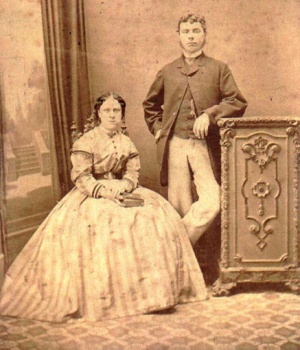
(Annie and John Chapman c.1869)
However, Thomas Bond, the police surgeon from ‘A’ Division who examined Mary Kelly claimed she was murdered…
“…by a person who had no scientific nor anatomical knowledge… [not even] the technical knowledge of a butcher or horse slaughterer or any person accustomed to cut up dead animals.”
The term ‘anatomical knowledge is also something of a confusing one. It does not necessarily mean that the man was a doctor nor that he was a horse slaughterer or common butcher – just that they knew where things were. Again, it’s open to debate.
Is there anything new to be discovered about the case other than the identity of the killer? – Cate Hall.
Cate is the Executive Producer of the excellent series The Victorian Slum. I can’t recommend that series highly enough if you ever get a chance to see it. She recently told me that the scene where the family sell Victorian food to modern customers outside the Ten Bells pub almost featured a cameo from a recent winner of The Apprentice! Cate worked on that show and recognised him instantly while he was drinking with his friends in the background. An example of how the clientele has changed over the years!
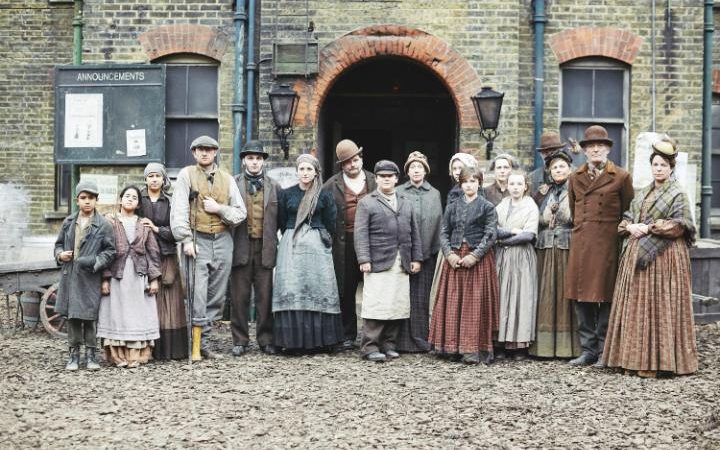
(BBC’s The Victorian Slum)
As for new evidence in the field of Ripperology – plenty!
Only recently Patricia Cornwell has discovered the strong possibility that the artist Walter Sickert wrote a few Ripper letters and, even if you’re not convinced by her argument that he was the Ripper, that’s a significant find. There are also new photographs coming to light all the time. In the last ten years tour guides John Bennett and Philip Hutchinson have found some very interesting snaps of the murder sites. John discovered a photo of George Yard building where Martha Tabram was killed while Philip found a picture of Dutfield’s Yard which dates back to 1900 – possibly the first ever Ripper tour photo!
There are still many things I’d like to know. Who was Anderson’s witness? How much did Macnaghten know? How close to the killer were Charles Lechmere and Robert Paul when they found Mary Ann Nichols? What did the Ripper from the time he left Mitre Square and dropping the apron in Goulston St? If PC Long is to be believed and it really was dropped between 2.20 and 2.50am, what did he do and where did he go for those 35-65 minutes? Home to dump his trophies?
And, of course, what with him being my favourite, I’d love to know what was George Hutchinson’s game?
Then there’s the Holy Grail – a picture of, or indeed anything about Mary Kelly. Yes, there is still so much to do.
Where the police inept or discouraged from investigating? – Sean Sheridan
Not inept at all though the media had other ideas about that. They simply didn’t know what they were investigating.
They were far from discouraged by the top brass either. One thing they wanted more than anything to reaffirm the public’s confidence in them was to catch the Ripper. There is no suggestion whatsoever that the senior officials had any other consideration than to bring the case to a close.
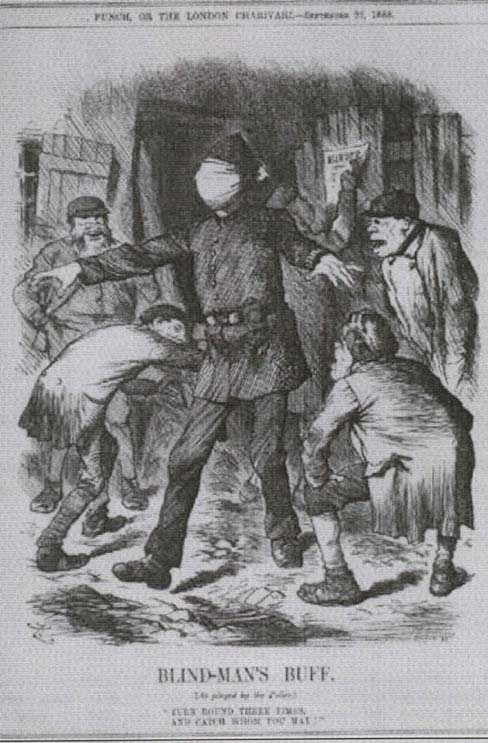
The public criticism weighed heavily on the police at the time and that’s why I’ve always felt that Robert Anderson’s claim about catching the Ripper was bogus. He was something of a vain character and I don’t think he could bear to live with the idea that he didn’t get his man.
Did similar murders occur abroad soon after they stopped in Whitechapel or was the Kelly murder his finest hour? – Gerard Ryan
The most notable murder was that of Carrie Brown in New York in April 1891.
Brown was known as ‘Shakespeare’ as she liked to quote the bard during drinking games. She was in her late 50s when she met her end.
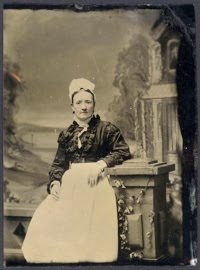
(Carrie Brown)
Her mutilated body was found in a room in the East River Hotel near the Brooklyn Bridge. Thomas Byrnes of the NYPD quickly arrested a man called Ameer Ben Ali though the case against him was weak. However, he was tried, convicted and sentenced to life imprisonment.
Ben Ali served eleven years when an action group set out to prove both his innocence and the police force’s corruption. The police had relied on ‘evidence’ that there were bloodstains found in Ali’s room though it’s likely that the police themselves had walked the blood into his room.
In 1895 Byrnes was persuaded to resign by the new president of the New York City Police Commission – one Theodore Roosevelt, who would become President six years later.
Little is known about Carrie’s injuries though the presiding doctor claimed that the killer had attempted to completely gut her. The press reported that she had been stabbed and cut repeatedly.
There was one witness who saw Carrie with a man that night. Assistant Housekeeper Mary Miniter told the police that she saw her with a man of about 32 with a slim build and long nose. He was of ‘foreign’ appearance and wore a cutaway coat, black trousers and a dented derby hat. He seemed keen to avoid notice and hung back in the shadows when Mary saw him.
George Chapman/Severin Klosowski was in New Jersey at this time and has become a suspect, but it’s a little too late to be a Ripper victim – some two and a half years after Mary Kelly died.
Probably the closest Whitechapel murder to Kelly’s was ‘Claypipe’ Alice McKenzie’s in Castle Alley in July 1889. Her body showed signs of mutilation though nothing like those given to Eddowes and Kelly. It is at least in the same area being around the corner from Goulston St close to Commercial St. But, again, that’s still a long time after the glut of murders from August to November 1888. I’m fairly sure the man was dead or incarcerated for another crime by the time Alice breathed her last.
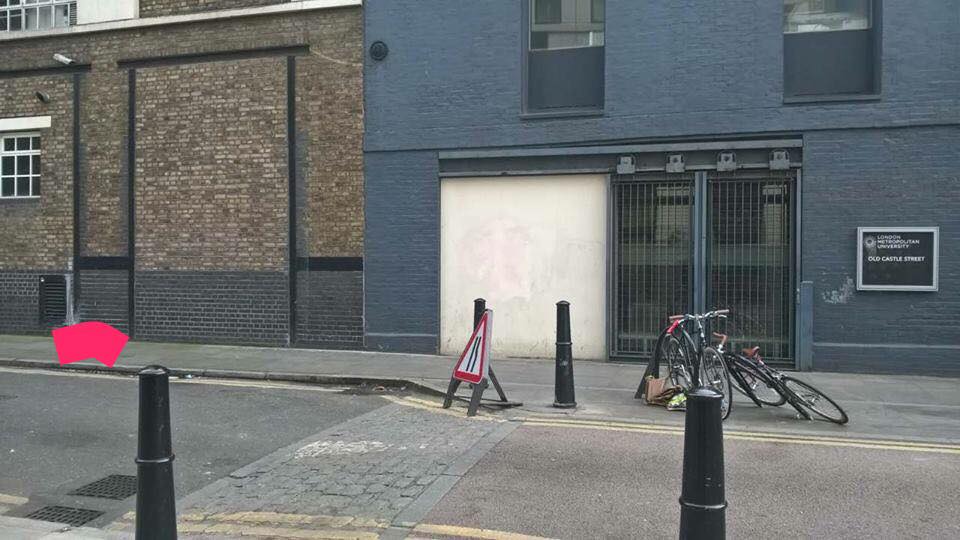
(The location of Alice McKenzie’s body on 17th July, 1889. With thanks to Neil Bell for pointing out the exact position)
Commissioner James Monro and Dr Thomas Bond considered hers to be a Ripper murder though Anderson, Phillips and Abberline did not while the Coroner, Wynne Baxter considered it to be a copycat killing.
Which books would you recommend we read about the murders and times? – Matthew and Edith, London.
I can only recommend the books I keep coming back to – namely the big three.
- ‘Jack the Ripper: The Facts’ by Paul Begg. My favourite book on the subject by miles.
- ‘The Complete History of Jack the Ripper’ by Philip Sugden. The bible of Ripperology. So renowned in Ripper circles that I’ve often heard of it referred to as ‘the Sugden’
- ‘The Complete Jack the Ripper’ by Donald Rumbelow. An older work but no less relevant. Very readable indeed.
I’d also recommend casebook.org as an invaluable source as well as the Rippercast series of podcasts should you prefer something a little more modern.
Next week is the final installment of Ten Weeks in Whitechapel so I’ll post an overview of the Autumn of Terror and hopefully provide some conclusions. Thanks to everyone who provided a question.
As things stand there are plans to keep this series alive in another place. I can’t say too much at present but it’s very exciting indeed.
Thank you.




